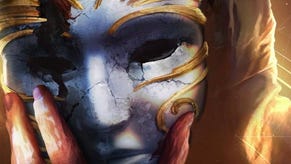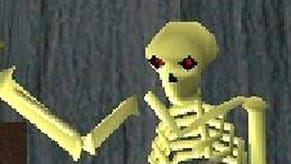Retrospective: Planescape Torment
What can change the nature of a fan?
Amidst the dusty annals of video gaming, there are games only mentioned in hushed tones. There are games that are traded in back-alleys, games where the few extant copies are guarded by hooded, pale-faced men who worship the old gods Mintah, Ammygah and Com O'door. Games where only one person has ever played it, and he whispers its plot endlessly from his isolated, padded rooms in Bedlam...
Planescape Torment isn't one of those games.
Planescape is the game most likely to be name-dropped by PC journalists, after Deus Ex. Planescape is the game that took the cigarette-end of the superb Baldur's Gate engine-based games and immolated their legacy in a ball of conspicuous failure, followed shortly by the apparent collapse of its publisher, Interplay. Planescape is a game that, shamefacedly, one of our writers gave 7/10 to, though his reasons were just. Planescape is the only game I've ever borrowed and not given back (I do hope they're not reading...)
More interesting facts about Planescape: it has the longest script of any videogame ever written at around 800,000 words, itself adapted into a strangely-addictive novel and another book. It's an adaptation of the Baldur's Gate engine to the one of the most abstruse elements of the Dungeons & Dragons universe - the planes, the mythical realms that were Venn diagrams of moral alternatives made physical; sod Fear & Loathing in Las Vegas, if this were a book then you'd call it unfilmable. For a retrospective it presents a unique problem: when a game features nearly a million brilliant words, it's easy to write 10 times that in analysis. Most of the words I'm going to write are spoilers, so if you want to play it STOP READING NOW.

You take the part of the Nameless One, a heavily-scarred, tattooed and frankly ugly amnesiac who wakes up in the morgue. So far, so Grisham. Yet this morgue is staffed by zombies, and is built in Sigil, the city of doors. You soon learn your task, from a chatty skull who reads the tattoos on your back (this was the year before Memento, so if anything that plagiarised this), and it is to find out why you cannot die, why you forget more every time you do, and what you've done with the hundreds of lives you've lived before. You've lived these lives across the planes but mainly in Sigil, which, in planar lore, sits in a neutral zone and is scattered with portals that might send you round the corner, or all the way across the planes, if you know what their hidden keys are. It sits atop on the inside of a torus that circles the tip of an endless spire and is overseen by the sadistic, arbitrary Lady of Pain, who even gods fear, and whose multi-pronged shadow features heavily in the spiky, nasty architecture.
The spectacular in-game appearance of the city is an argument in itself for forsaking the rotational delights of true 3D gaming; hand-painted scenery mixes Victorian urban grittiness and tremendous variety of scale with avant-garde fantasy. Magnificent architraves and naves loom from nowhere over sewage and decay; brain-bending buildings watch over the map with obscure functions and names, while an interplanar bazaar fills the streets with any possible race or device. Hieronymous Bosch landscapes meet colossal statuary, and no other game has met its implied scale. When the game breaks out of Sigil it does so suddenly and the new areas - the hell of Baator and the border prison-town of Curst - are equally bizarre, though more cursorily designed. And, curiously, despite the lushness of the built environment, much of the description comes in those massive chunks of text.









